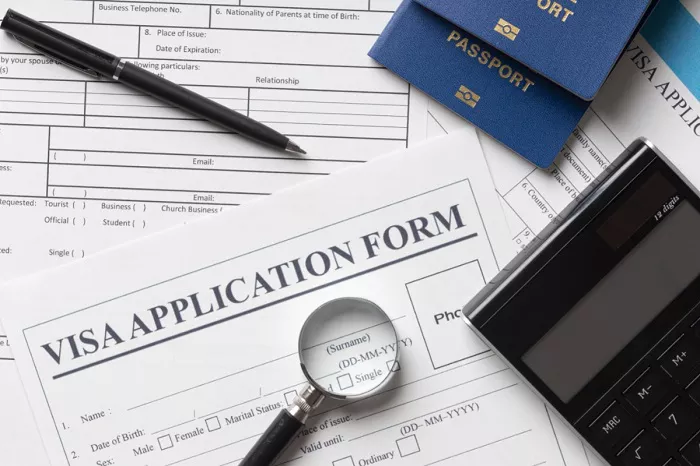Studying abroad is a dream for many students around the world. Whether it’s the appeal of world-class education, international exposure, or better career opportunities, more students than ever are seeking to enroll in institutions across countries like the United States, Canada, Australia, the United Kingdom, and others. However, before packing your bags and booking a flight, you must secure a student visa to legally study in a foreign country.
This article explores which student visa is easiest to obtain, considering various factors such as student visa application processes, student visa requirements, and approval rates. By comparing different countries and the visa types they offer, we aim to provide a clear perspective on the best options for prospective international students.
Understanding Student Visas
A student visa is an official document issued by a government that allows a foreign national to study at an accredited educational institution in that country. Each country has its own visa classification and requirements, and these can vary widely based on nationality, course of study, and the duration of the program.
Common Student Visa Types
There are several student visa types globally, each corresponding to the specific education system of the host country. Here are some examples:
- F-1 Visa – For academic students in the United States
- J-1 Visa – For exchange students in the United States
- Student Visa (subclass 500) – For full-time students in Australia
- Tier 4 (General) Student Visa – For students in the United Kingdom (now called the Student Route)
- Study Permit – For students in Canada
- Student Visa D – For students in countries like Germany and France
Factors That Make a Student Visa Easier to Obtain
Before diving into specific countries, let’s outline the primary factors that influence the ease of obtaining a student visa:
- Simple application process
- Lower documentation requirements
- Higher visa approval rates
- Fewer financial proof obligations
- Flexible English language requirements
- Quick processing times
Top Countries With Easy Student Visa Processes
1. Canada – The Friendly Study Destination
Canada has emerged as a top choice for international students due to its high-quality education system and immigrant-friendly policies. The Canadian student visa application process, known as the Study Permit, is relatively straightforward compared to other countries.
Student Visa Requirements for Canada
- Acceptance letter from a Designated Learning Institution (DLI)
- Proof of funds to cover tuition and living expenses
- No criminal record (may require a police certificate)
- Medical exam (if applicable)
- Language proficiency test (usually IELTS or TOEFL)
Why Canada’s Student Visa is Easier
- Streamlined visa process through the Student Direct Stream (SDS) for certain countries
- High visa approval rate, especially for SDS applicants
- Ability to work part-time during studies and full-time during breaks
2. Germany – Tuition-Free and Visa-Friendly
Germany is a favored destination for students seeking high-quality education without the burden of expensive tuition fees. The Student Visa D is used for long-term academic programs in Germany.
Student Visa Requirements for Germany
- Letter of admission from a recognized German university
- Proof of financial resources (currently €11,208 in a blocked account)
- Health insurance
- Academic transcripts
- Proof of language proficiency (German or English, depending on the course)
Why Germany’s Student Visa is Easier
- No tuition fees for public universities
- Transparent and organized visa process
- High visa success rate for students with complete documents
- Ability to extend visa and stay post-study
3. Australia – Streamlined and Efficient
Australia offers a single student visa (subclass 500) for all international students. The country is known for its simplified process and swift decision-making.
Student Visa Requirements for Australia
- Confirmation of Enrolment (CoE) from an Australian institution
- Genuine Temporary Entrant (GTE) requirement
- Proof of financial capacity
- English language proficiency (IELTS, TOEFL, or PTE)
- Health insurance (OSHC)
Why Australia’s Student Visa is Easier
- Single visa for all study levels
- Online application with digital document submission
- Fast processing times (often within 4 weeks)
- Work rights for students during and after study
Comparative Analysis: Which is Truly the Easiest?
Now that we’ve examined Canada, Germany, and Australia, let’s compare their student visa processes in key areas.
Application Process
- Canada: Very structured, especially under the SDS program
- Germany: Straightforward but involves in-person interviews at consulates
- Australia: Fully online and user-friendly
Financial Requirements
- Canada: Moderate proof of funds needed
- Germany: High initial deposit in a blocked account
- Australia: Varies by course and location but can be significant
Approval Rates
- Canada: High, especially under SDS
- Germany: High for students with complete and correct documents
- Australia: High but varies by applicant country
Processing Time
- Canada: 20 days (SDS), 1–2 months (regular)
- Germany: 6–12 weeks
- Australia: 3–6 weeks
Tips for a Successful Student Visa Application
- Start the process early to avoid delays
- Ensure all documents are complete and accurate
- Prepare for interviews (if applicable)
- Meet language and financial requirements
- Clearly state your intention to return home post-study
Other Considerations When Choosing a Destination
While ease of visa approval is important, students should also consider:
- Quality and ranking of universities
- Living costs and accommodation
- Post-study work rights and immigration pathways
- Cultural integration and safety
Conclusion
There is no one-size-fits-all answer to the question of which study visa is easiest to get. However, based on our analysis, Canada stands out for its streamlined Student Direct Stream, transparent student visa application process, and high approval rates. Germany is a top contender for its free education and logical requirements, while Australia’s efficient digital process also makes it a strong option.
Ultimately, the best choice depends on your personal circumstances, academic goals, and long-term plans. By understanding the nuances of different student visa requirements, you can make a well-informed decision that paves the way for a successful educational journey abroad.


